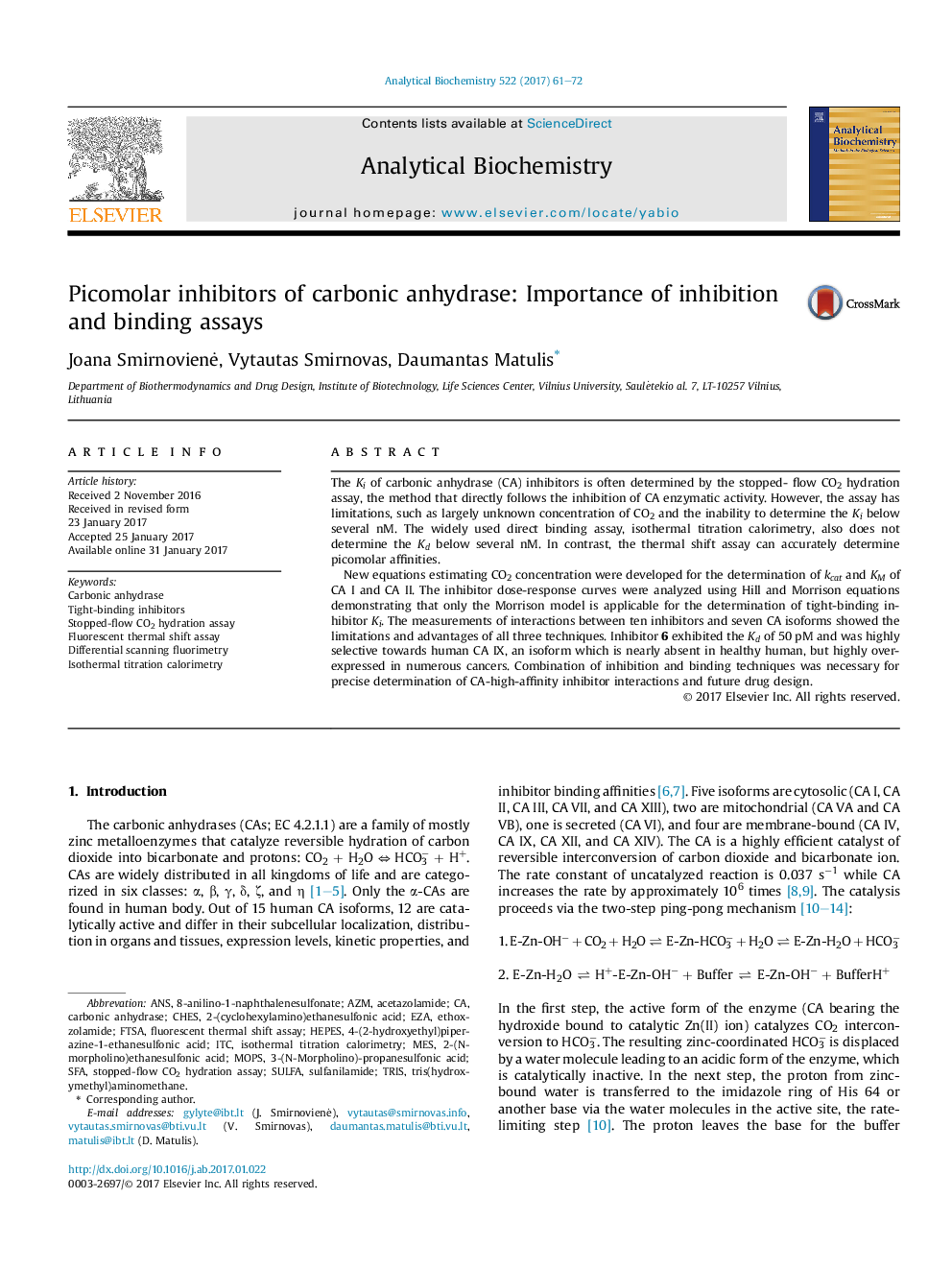| کد مقاله | کد نشریه | سال انتشار | مقاله انگلیسی | نسخه تمام متن |
|---|---|---|---|---|
| 5131819 | 1491325 | 2017 | 12 صفحه PDF | دانلود رایگان |

The Ki of carbonic anhydrase (CA) inhibitors is often determined by the stopped- flow CO2 hydration assay, the method that directly follows the inhibition of CA enzymatic activity. However, the assay has limitations, such as largely unknown concentration of CO2 and the inability to determine the Ki below several nM. The widely used direct binding assay, isothermal titration calorimetry, also does not determine the Kd below several nM. In contrast, the thermal shift assay can accurately determine picomolar affinities.New equations estimating CO2 concentration were developed for the determination of kcat and KM of CA I and CA II. The inhibitor dose-response curves were analyzed using Hill and Morrison equations demonstrating that only the Morrison model is applicable for the determination of tight-binding inhibitor Ki. The measurements of interactions between ten inhibitors and seven CA isoforms showed the limitations and advantages of all three techniques. Inhibitor 6 exhibited the Kd of 50 pM and was highly selective towards human CA IX, an isoform which is nearly absent in healthy human, but highly overexpressed in numerous cancers. Combination of inhibition and binding techniques was necessary for precise determination of CA-high-affinity inhibitor interactions and future drug design.
290
Journal: Analytical Biochemistry - Volume 522, 1 April 2017, Pages 61-72